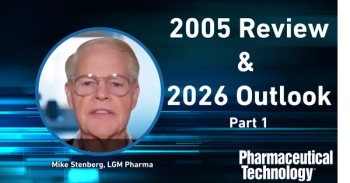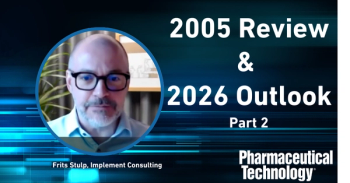
Research Shows that HIC Can Effectively Separate Deaminated Capsids from Non-Deaminated Capsids (ASGCT 2024)
The separation of deamidated capsids from non-deamidated capsids can be achieved using HIC, according to studies done by a team at Oxford Biomedica.
Editor's note:
In his
Meola emphasized how the focus on post-translational modification of capsid proteins of the adeno-associated virus (AAV) is growing in the process and analytical development space for gene therapies. The industry has been particularly focusing on how the deamidation of capsid protein from viral protein 1 (VP1)-specific residues, including the N57 domain, is linked to a loss of in-vivo potency (1).
“Temperature, pH, and storage time have been identified as key factors causing this phenomenon,” Meola. “In our quest at Oxford Biomedica—to try and resolve this—we have a static binding capacity residence screening protocol that we run where we look at a variety of different residents. In this case, we decided to look at salt-tolerant residents,” he stated.
Besides process control to prevent deamidation, Meola’s team hypothesized (2) that extrusion of VP1 and deamidation of N57 are related phenomenon and result in generating empty, partial, and full capsids, which significantly influences the ability of the anion exchange chromatography (AEX) process. AEX’s ability to remove empty capsids and deliver functional AAV is thus compromised.
Meola noted that charge-driven separation techniques have not provided the resolution required to differentiate between deamidated and non-deamidated capsid species. Because of this, his team highlighted novel approaches that can be applied to the AEX process to address the complex challenge of removing both empty capsids and deamidated intact capsids. “Controlling strategies in the upstream and downstream processes should be studied and defined at the early stage of process development to limit onset of deamidation in order to minimize product related impurities and loss of vector functionality,” Meola stated.
One of the team’s first approaches was to use HIC to separate distinct peaks with near baseline resolution. After separation, each peak was isolated and individually reprocessed with AEX. “Surprisingly, we discovered that HIC resolved two different species of AAV capsids with near baseline resolution. Each species was reprocessed on AEX, and all product quality attributes were assessed for the intermediate peaks that were generated. We found that the capsids that were more hydrophobic were also more negatively charged,” he explained.
Furthermore, data from liquid chromatography–mass spectrometry analysis demonstrated that the more hydrophobic and more negatively charged capsids exhibited significant levels of VP1-specific N57 deamidation, which has been linked to a loss in gene expression. It was demonstrated, therefore, that the extrusion of VP1 exposes the hydrophobic phospholipase A2 domain on the VP1 unique region, a phenomenon that would make VP1 N57 residue exposed to solvent and thus susceptible to deamidation.
The team was thus able to demonstrate that HIC can be a useful method to separate non-deamidated capsids from deamidated capsids. Meola also stated that the team is working on a novel, patent-pending method to remove deamidated species while simultaneously enriching full capsids on the AEX process.
References
1. Giles, A.; Lock, M.; Chen, S. J.; et al. Significant Differences in Capsid Properties and Potency Between Adeno-Associated Virus Vectors Produced in Sf9 and HEK293 Cells. Hum Gene Ther. 2023, 34 (19–20),1003–1021. DOI: 10.1089/hum.2022.116
2. Meola, A.; Aguiar, A.; Chong, C.; et al. Not Created Equal: Impact of Deamidation on Capsid Heterogeneity and Anion Exchange Chromatography (AEX) Performance. Paper Abstract. annualmeeting.asgct.org (accessed May 8, 2024).
Newsletter
Get the essential updates shaping the future of pharma manufacturing and compliance—subscribe today to Pharmaceutical Technology and never miss a breakthrough.




